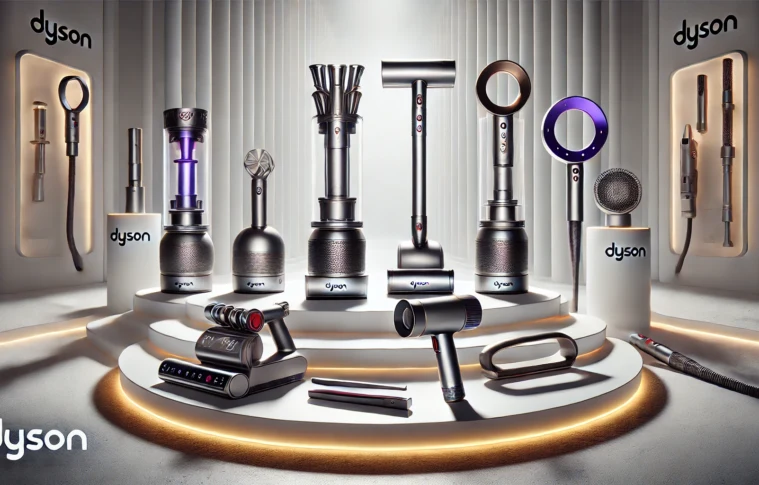Introduction
Dyson, the British technology company founded in 1991 by Sir James Dyson, is synonymous with groundbreaking product innovation. Known initially for its revolutionary bagless vacuum cleaners, Dyson has since diversified into new product categories, including air purification, lighting, and personal care. The company’s ability to combine engineering brilliance with sleek design has earned it a reputation as a global leader in innovation. This case study examines Dyson’s journey from vacuum cleaners to beauty tools, highlighting its innovation strategy, challenges, and impact on the market.
1. Dyson’s Innovation Philosophy
At the core of Dyson’s success is its relentless focus on solving real-world problems through engineering. The company’s innovation philosophy is guided by three key principles:
- User-Centric Design: Dyson identifies customer pain points and develops products that address them effectively.
- Technology-Driven Solutions: The company invests heavily in research and development (R&D), focusing on disruptive technologies.
- Commitment to Quality: Dyson products are known for their durability, efficiency, and minimalist design, which appeal to a premium audience.
2. Evolution of Dyson’s Product Portfolio
2.1 The Bagless Vacuum Cleaner: A Revolutionary Beginning
Dyson’s journey began with its first innovation: the bagless vacuum cleaner. In 1983, James Dyson introduced the Dual Cyclone technology, which eliminated the need for traditional vacuum bags by separating dust and air using centrifugal force. After facing initial resistance from manufacturers reliant on bag sales, Dyson launched its vacuum cleaner independently in Japan and later globally, where it became a commercial success.
Key features of the vacuum cleaner innovation include:
- Dual Cyclone Technology: Enhanced suction power and eliminated loss of efficiency.
- Transparent Bin: A design feature that showcased the dirt being collected, adding a sense of satisfaction for users.
By 2001, Dyson became the UK’s best-selling vacuum cleaner brand.
2.2 Expanding Into Air Technology
Building on its expertise in airflow engineering, Dyson introduced a series of air-related products:
- Air Multiplier (2009): A bladeless fan that redefined home cooling by creating a smoother airflow and eliminating traditional spinning blades.
- Air Purifiers: Combining filtration and fan technology, Dyson air purifiers addressed indoor air quality concerns, cementing Dyson’s position in wellness-focused innovation.
2.3 The Move into Beauty Tools
Dyson’s entry into the beauty market marked a significant shift, leveraging its expertise in airflow and temperature control to address challenges in hair care. The transition was not without risks, but it paid off immensely, establishing Dyson as a disruptor in the beauty industry.
Dyson Supersonic Hair Dryer (2016)
The Supersonic hair dryer was Dyson’s first foray into beauty tools. Key features included:
- Fast Drying: The digital V9 motor spins at up to 110,000 RPM, drying hair quickly while maintaining precision.
- Heat Protection: Intelligent heat control prevents extreme temperatures, protecting hair from damage.
- Ergonomic Design: A compact motor placed in the handle improves balance and reduces strain on users.
The Supersonic became a status symbol in the beauty industry, appealing to both consumers and professional stylists.
Dyson Airwrap (2018)
Building on the success of the Supersonic, Dyson launched the Airwrap, a multi-styler tool that uses the Coanda effect to curl, smooth, and volumize hair without extreme heat. The product was a game-changer for beauty enthusiasts, offering:
- Heatless Styling: Preserving hair health by avoiding excessive heat.
- Versatility: Multiple attachments for various hairstyles.
- Luxury Appeal: A premium product with strong branding and design aesthetics.
Dyson Corrale (2020)
The Corrale hair straightener further solidified Dyson’s position in the beauty market with its innovative flexing plate technology, which styles hair with less damage and increased control.
3. Dyson’s R&D and Innovation Strategy
3.1 Investment in Research and Development
Dyson’s commitment to innovation is evident in its significant investment in R&D. By 2024, the company had spent over £7 billion on R&D globally. Dyson employs over 15,000 engineers and scientists, working in state-of-the-art facilities across the UK, Singapore, and Malaysia.
3.2 Patents and Proprietary Technology
Dyson holds more than 14,000 patents globally, ensuring its innovations remain protected from imitation. Proprietary technologies, such as the V9 motor and Coanda effect, give Dyson a competitive edge.
4. Challenges and Competition
4.1 High Production Costs
Dyson’s products are premium-priced due to extensive R&D and high manufacturing costs. While this maintains exclusivity, it limits accessibility for price-sensitive customers.
4.2 Competition in the Beauty Market
In the beauty segment, Dyson faces competition from established brands like ghd, T3, and Shark, which offer high-performance tools at lower price points. However, Dyson maintains differentiation through its advanced technology and brand reputation.
5. Market Impact and Customer Reception
- Consumer Loyalty: Dyson has cultivated a loyal customer base willing to pay a premium for quality and innovation.
- Industry Disruption: Dyson’s entry into beauty tools disrupted traditional brands, pushing competitors to innovate and adopt new technologies.
- Sustainability Focus: Dyson’s emphasis on energy-efficient motors and longer product lifecycles aligns with growing consumer demand for sustainability.
6. Future Outlook
Dyson continues to innovate, with plans to expand its product portfolio and invest further in AI, robotics, and battery technology. Its focus on solving everyday challenges through engineering ensures the brand remains at the forefront of innovation.
Conclusion
Dyson’s journey from bagless vacuum cleaners to cutting-edge beauty tools exemplifies its commitment to innovation and problem-solving. By leveraging its expertise in airflow, motors, and heat control, Dyson has successfully diversified its portfolio and disrupted multiple industries. As the company continues to push boundaries, it serves as a model for businesses aspiring to combine engineering excellence with design-driven solutions.
Disclaimer
Posts in the Notebook are written by individual members and reflect personal insights or opinions. Please verify any information independently. If you have any concerns, notify the admin immediately so we can take action before any legal steps are taken.





